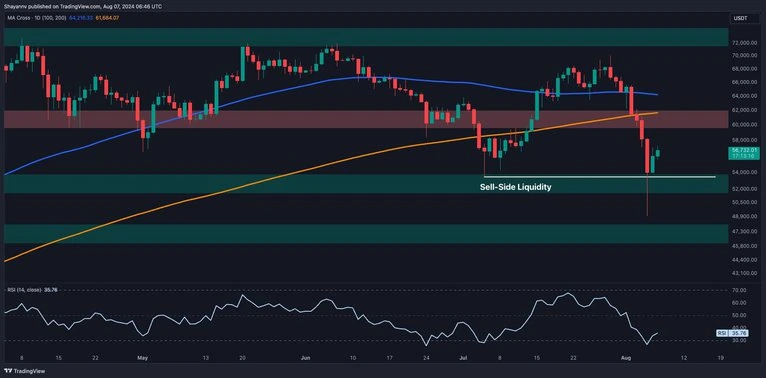The International Monetary Fund (IMF) has reported progress in negotiations with El Salvador concerning the implementation of policies aimed at strengthening public finances, enhancing bank reserves, improving governance, and addressing the risks associated with bitcoin.

Notably, while many of the expected risks related to Bitcoin have not yet manifested in El Salvador, the IMF emphasised the importance of increased transparency and measures to ensure both fiscal and financial stability.
El Salvador-IMF Talks on Economic Plans
An IMF mission released a statement on Aug. 6 that followed months of discussions with Salvadoran officials concerning policies for an IMF-supported program. The goal of this program is to rectify macroeconomic imbalances and spur growth and resilience within the country. The statement highlighted several key points where progress has been made:
The El Salvador-IMF talk have honed in on policies designed to enhance public finances, increase bank reserve buffers, improve governance and transparency, and mitigate the associated risks stemming from bitcoin. The IMF specifically noted that agreements include efforts to enhance the primary fiscal balance by 3.5% of GDP over the next three years through fiscal consolidation, mainly by rationalising the public wage bill while still maintaining social and infrastructure investment.
Plans are in place to bolster financial system reserve buffers, which will, in turn, support private sector credit and growth. These improvements aim to lessen reliance on domestic financing, with potential support from the IMF and multilateral development banks. Furthermore, structural reforms will be integrated into a multi-year strategy focused on enhancing governance, transparency, and the investment climate. Legislative efforts are currently being developed to tackle issues such as corruption, money laundering, and procurement shortcomings, with support from international partners.

While the IMF acknowledged that conversations surrounding bitcoin and other critical areas are still ongoing, it underscored the need for additional efforts to improve transparency and mitigate potential fiscal and financial risks associated with bitcoin ventures.
El Salvador made history in September 2021 by becoming the first country to declare bitcoin as legal tender. The Salvadoran government has adopted a strategy of purchasing one bitcoin daily. President Nayib Bukele’s administration has sought to generate revenue from bitcoin through various initiatives, such as passport and citizenship programs, conversion fees, and mining operations. Additionally, El Salvador has removed income tax for international investments, aiming to attract foreign capital to further bolster its bitcoin-centric economy.
Bitcoin Market Analysis: Two Targets Following Price Decline
In conjunction with developments regarding El Salvador and Bitcoin, the cryptocurrency market has recently faced turbulence, with Bitcoin experiencing a sharp price drop. Following a significant downturn, the price of Bitcoin fell below the crucial support level associated with its previous major swing low of $53,000. This drop signals a potential shift toward a bearish market structure.
Technical Analysis: Daily Chart
An examination of Bitcoin’s daily chart demonstrates the extent of the recent downturn, which has been exacerbated by widespread fears of impending economic turmoil. Starting from the previous Friday, a surge in selling pressure prompted Bitcoin’s price to break below key support levels, ultimately falling beneath its 200-day moving average at $61,000 and the previous major swing low of $53,000.

Source: TradingVIew
As perpetual markets cool off and undergo deleveraging, the chances of a mid-term consolidation phase increases. Consequently, in the upcoming days, analysts predict Bitcoin’s price is expected to fluctuate within the range of $53,000 to $60,000.
Technical Analysis: 4-Hour Chart
Observations on the 4-hour chart reveal a significant sell-off as Bitcoin’s price tumbled through various critical support zones, including the psychological threshold of $60,000 and the essential $53,000 mark. Nevertheless, the intensity of this decline has caused a considerable liquidation of long positions within the futures market, resulting in a temporary slowdown in bearish momentum when the price reached the lower boundary of a multi-month wedge pattern around the $50,000 level, leading to a minor rebound.
Given the aggressive nature of the downturn, the market may require a corrective phase in the short term. Key targets for this correction are identified within the Fibonacci retracement levels, particularly between the 0.5 level at $62,000 and the 0.618 level at $59,500. Consequently, Bitcoin is anticipated to remain within the $50,000 to $62,000 range, with a potential sideways consolidation until the next substantial market movement occurs.
On-chain Analysis
As Bitcoin’s price struggles to maintain upward momentum, a key contributing factor to its recent decline appears to be increased selling activity within perpetual markets and the aforementioned long-squeeze event. A recent evaluation of funding rates—a crucial indicator for assessing market sentiment—highlights the prevailing dynamics. Positive funding rates typically indicate bullish sentiment, while negative rates suggest bearish sentiment.
The Final Word
The recent sharp drop in funding rates shows that the market downturn was catalysed by aggressive short selling, resulting in the liquidation of many long positions. Currently, funding rates have shifted into negative territory, indicating a broader bearish sentiment and the dominance of short sellers. However, this transition may also be interpreted positively, suggesting that the futures market is no longer overheated. This situation could lay the groundwork for a more sustainable bullish trend in upcoming months, contingent upon the absence of drastic alterations in market conditions. Stay tuned for more updates on El Salvador-IMF talks on the Turkish NY Radio.








